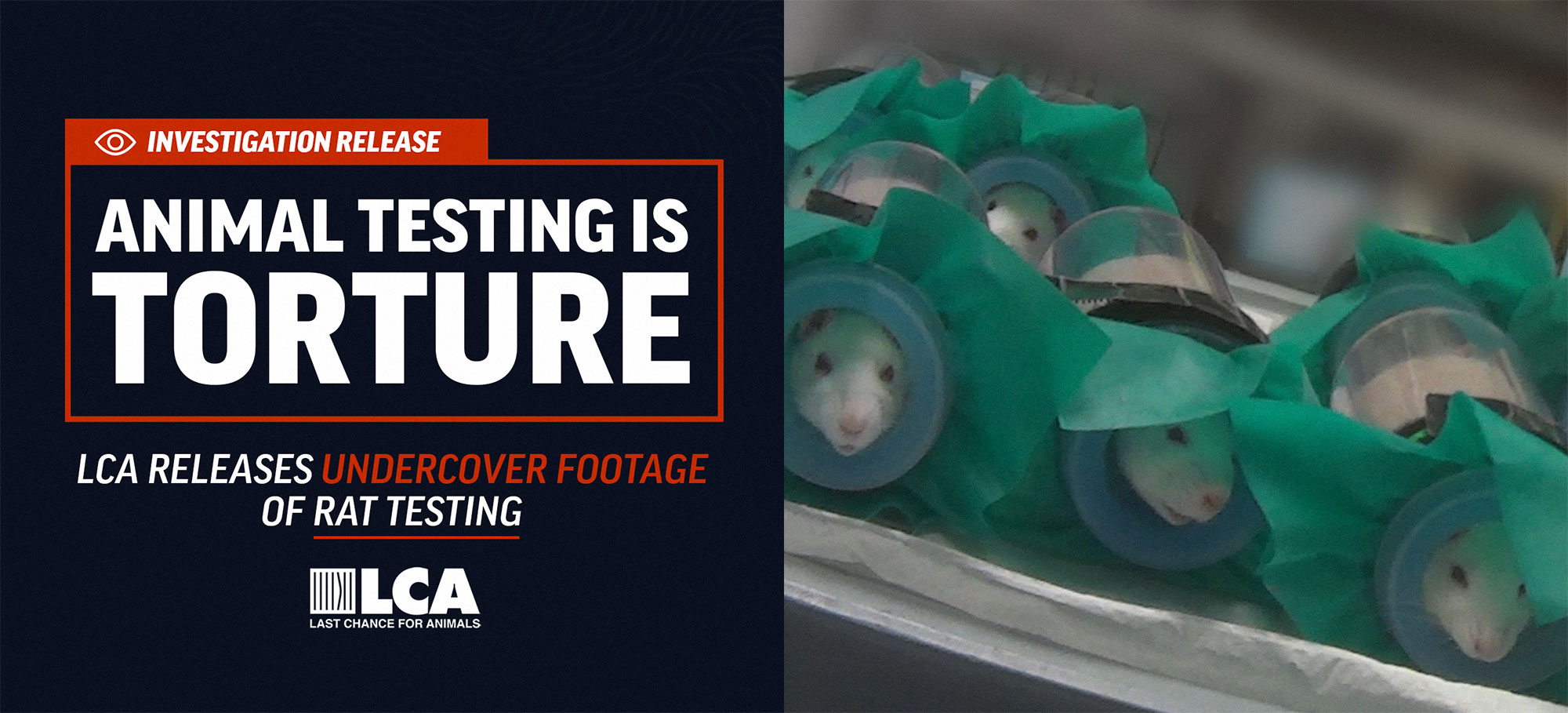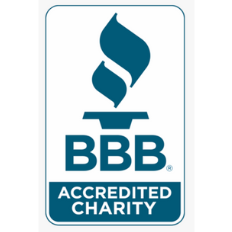
LCA UNDERCOVER INVESTIGATION EXPOSES THE SUFFERING OF RATS IN ANIMAL TESTING
Release 3/10/2025 - A new undercover investigation released by LCA exposes the suffering of rats at a research laboratory. An investigator who worked at the lab as a toxicology technician for 6 months, working primarily with rodents, documented rats being forced to ingest toxic substances, including household cleaners, pharmaceutical drugs, and cannabis. U.S. RESIDENTS: TAKE ACTION.
WATCH AND SHARE THE UNDERCOVER VIDEO
THE DAY-TO-DAY LIVES OF THE RATS
The substances rats are forced to ingest are called "Test Items" or "TI's". Rats in a study are usually given different quantities of TI's - high, medium and low doses - along with a control group given a placebo. The investigator documented drugs administered to rats using different methods. Usually the method is based on how the drug is intended for use in humans.
Some experiments can last years, others only one day. At the end of experiments, the rats are killed and necropsied. Common killing methods in laboratories include a C02 chamber (documented during this investigation), exsanguination, and cervical dislocation. Decapitation using a rodent guillotine is another common killing method. During necropsy, their tissues and organs are harvested and analyzed to determine how the TI impacted their systems.
The investigation documented rats forced to ingest TI's using these cruel methods:
- Sublingual - The TI is given under the tongue.
- Gavage - A tube is put down the throat into the stomach. The TI is administered through the tube directly into their stomachs.
- Infusion - The TI is infused into veins in their tails or shoulder blades. using an IV line. The IV line is held in place by an infusion jacket the rats wear.
- Subcutaneous - The TI is injected under their skin.
- Inhalation - Rats are put into respiratory cones and the TI is inhaled.
The rats were checked daily for side effects from the TI's but if they were suffering, nothing was done to alleviate their pain.
- During one study, rats developed painful carcinogenic lumps, yet they were still poked multiple times with a needle around the lump to inject the TI.
- In another study, rats developed lesions under their arms from the infusion jackets they were forced to wear, yet the study continued.
 Ear Tag |
 Infusion Jacket |
 Infusion Jacket |
 Infusion Jacket Injury |
 Rat Cage |
 Blood Draw |
 Inhalation Study |
 Subcutaneous Injection |
 Cancerous Lump |
 Sublingual Dose |
 Respiratory Cone |
 Respiratory Cone |
"RESEARCH MODELS" = ANIMAL SUFFERING
Charles River Laboratories and Inov (formerly Envigo) are major suppliers of rodents to animal research. Rats are genetically manipulated to make them more desirable for animal testing. The rats documented in LCA's investigation are Sprague Dawley, one of the most common breeds used in biomedical research. Other rats bred for research include the SRG Rat by Charles River, which "is a severely immunodeficient inbred rat..." that boasts the ability to grow "larger tumor sizes (up to 10x larger compared to mice..."). An inbred mouse sold by Inotiv (the C57BL/6) is prone to alcoholism and binge drinking. Animal testing companies refer to rats and other animals as "research models", thus devaluing their individuality and sentience.
A LONG HISTORY OF PAIN AND SUFFERING
The use of rats in research dates back to the 1850s, although it is estimated they had been used in experiments even earlier. Today they are one of the most commonly used animals in research, favored for their size, adaptability and genetics. They are used in a variety of experiments from toxicology to wound healing to cocaine addiction.
On August 24, 1966, the federal Animal Welfare Act was signed into law. Enforced today by the United States Department of Agriculture (USDA) and the Animal Plant and Health Inspection Service (APHIS), the Act sets out minimum standards of care for warm-blooded animals in research. Research facilities that use animals covered under the Act have to register with the USDA, report the annual number of animals used in research by species and undergo annual inspections (however, the Act is weak and animals protected under it are still subjected to horrendous experiments and torture).
Although they are warm-blooded mammals, rats, mice, and birds are exempted under the Animal Welfare Act. A lawsuit ruled in 2000 that rats, mice, and birds needed to be included in the Act and the USDA began extending them legal protection. However, in 2002, Senator Jesse Helms (R-NC) successfully exempted them from legal protection by leaving them out of the Farm Bill. Helms narrowed the definition of "warm blooded animals". Helms' actions were a huge victory for animal research companies that lobbied for rats, mice, and birds to be denied legal protection and profit from these animals being unprotected. Without legal protections, companies like Charles River and Inotiv don't need to uphold any minimum standards of care for these animals and they can be subjected to conditions and experiments legally protected animals wouldn't be.
It is estimated that rats, mice, birds and fish compromise at least 95% of total animals in U.S. research labs, yet they are not legally protected. Their exact numbers are impossible to know and their conditions go unmonitored. According to a 2021 Science Magazine article,it is estimated that there are over 111 million rats and mice suffering in U.S. labs and breeding facilities. These are sentient and intelligent individuals who do not deserve to suffer and should not be used in research.
HOW YOU CAN HELP
NOT A U.S. RESIDENT?: Sign the petition to ban animal testing globally.
WATCH OUR UNDERCOVER INVESTIGATION INTO ITR RESEARCH LABORATORY NARRATED BY JOAQUIN PHOENIX












